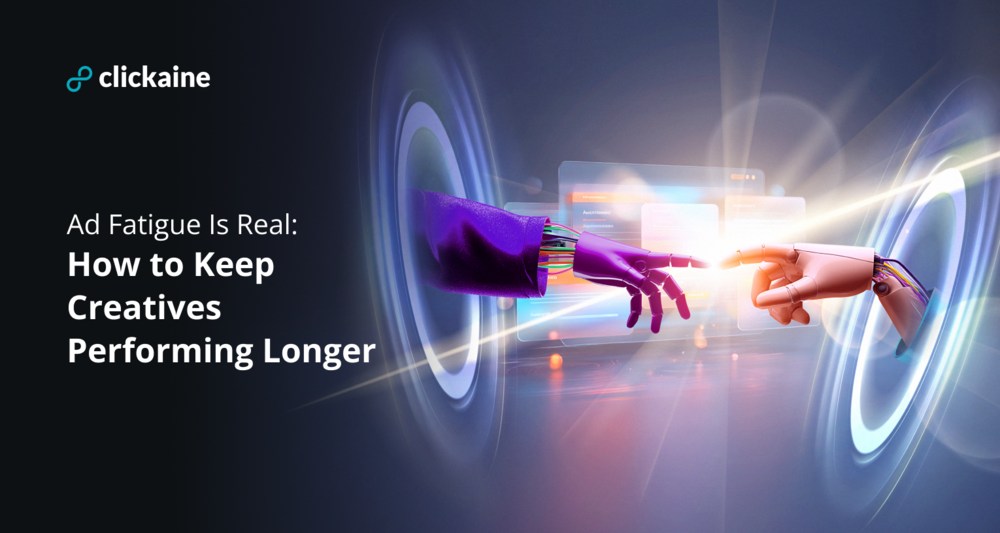
Ad Fatigue Is Real: How to Keep Creatives Performing Longer
Digital advertising isn’t just about launching the perfect ad — it’s about keeping it fresh. With users scrolling faster, attention spans shrinking, and competition rising, ad fatigue sets in faster than ever. If your creatives are dying a slow death in front of the same eyes, you’re wasting budget and missing conversions.
In this article, we’ll break down how to fight ad fatigue and keep your campaigns converting using smart tactics like frequency capping, creative rotation, ad refresh logic, and visual variety.
🧠 What Is Ad Fatigue?
Ad fatigue occurs when your audience has seen the same creative too many times. Engagement drops, click-through rates (CTR) fall, and costs creep up. Your audience starts to ignore you — not because your message is bad, but because it’s no longer fresh.
🚩 Signs of Ad Fatigue
- CTR dropping steadily
- CPMs increasing while performance lags
- Lower engagement despite high impressions
- Higher frequency scores (especially on Meta & Google)
- Audience overlap with no creative variety
If you’re seeing these — it’s time to act.
💡 How to Keep Your Ads Performing Longer
Here are four practical, tested tactics to prevent burnout and extend the lifespan of your ad creatives:
1. 🎯 Use Frequency Capping (Where Possible)
- Set frequency caps in platforms like Google Display & programmatic to limit how often a user sees your ad per day or per week.
- Ideal frequency varies by goal:
- Brand awareness = 3–5x/week
- Direct response = 1–2x/day max
- Brand awareness = 3–5x/week
- Test and adjust per campaign — too low and you lose exposure, too high and fatigue kicks in fast.
⏱ Pro tip: Monitor “Frequency to Conversion” in Meta to spot the sweet spot before drop-off.
2. 🔁 Rotate Creatives Intelligently
- Don’t just A/B test and leave it. Plan a rotation schedule — especially for evergreen campaigns.
- Group creatives by themes or hooks (e.g., emotional, product, testimonial) and rotate them weekly or bi-weekly.
- Use automated rules (in Meta, Google, or your ad tech platform) to pause low-performers and boost winners.
💡 Creative rotation = built-in freshness without constantly reinventing.
3. 🧩 Implement Ad Refresh Logic
- Use tools (like Clickaine) that allow ad refreshes without resetting learning.
- Duplicate top-performing ads with slight variations (headline/image/CTA) to keep algorithms happy and users engaged.
- Structure campaigns to refresh before fatigue shows up — not after.
🛠 Example workflow:
- Launch 3 creatives.
- Monitor performance weekly.
- Replace bottom 1 with new variation.
- Repeat every 10–14 days.
4. 🎨 Design with Visual Variety in Mind
- Alternate layouts, colors, fonts, and media types (images, carousels, video, UGC).
- Build a modular creative system — so headlines, images, CTAs can be swapped easily without redesigning from scratch.
- Use seasonal or contextual cues — e.g., holidays, product drops, time of year — to create timely relevance.
🚫 Avoid: Same brand image with only text swapped. It’s still the same ad in users’ eyes.
📈 Final Thoughts
Ad fatigue isn’t a sign you failed — it’s a sign your ads are working and need refreshing. A high-performing campaign can burn out fast without a creative management strategy.
So don’t leave it to chance.
Cap your frequency. Rotate often. Refresh smart. Design for variation.
The result? More clicks, longer life cycles, better ROI.
Need help automating your ad rotation and scaling creative testing?
👉 Try Clickaine’s Creative Suite and say goodbye to fatigue, for good.

